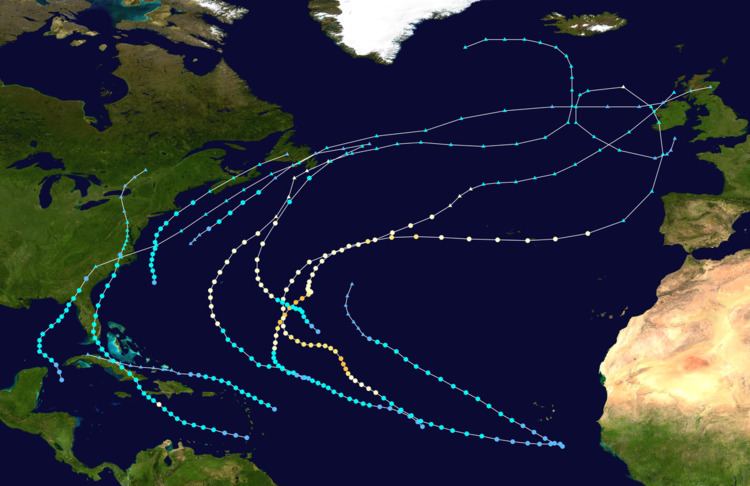 | ||
The 2006 Atlantic hurricane season was the first since 2001 in which no hurricanes made landfall in the United States, and the first since 1994 that no tropical cyclones formed during October. This timeline documents all the storm formations, strengthening, weakening, landfalls, extratropical transitions, as well as dissipation. The season officially began on June 1, 2006, and lasted until November 30. The timeline includes information which was not operationally released, meaning that information from post-storm reviews by the National Hurricane Center, such as information about a storm that was not operationally warned on, have been included.
Contents
The 2006 Atlantic hurricane season was significantly less active than the previous year's Atlantic hurricane season. Following the intense activity of 2005, forecasts predicted that the 2006 season would be only slightly less active. However, activity was slowed by a rapidly forming El Niño event in 2006, the presence of the Saharan Air Layer over the tropical Atlantic, and the steady presence of a robust secondary high-pressure area to the Azores high centered on Bermuda. There were no tropical cyclones after October 2. The calendar year 2006 also saw Tropical Storm Zeta, which arose in December 2005 and persisted until early January, only the second event on record that a storm spanned two calendar years in the Atlantic. The storm can be considered a part of the 2005 and 2006 seasons, although it occurred outside the June 1 – November 30 windows during which most Atlantic basin tropical cyclones form.
